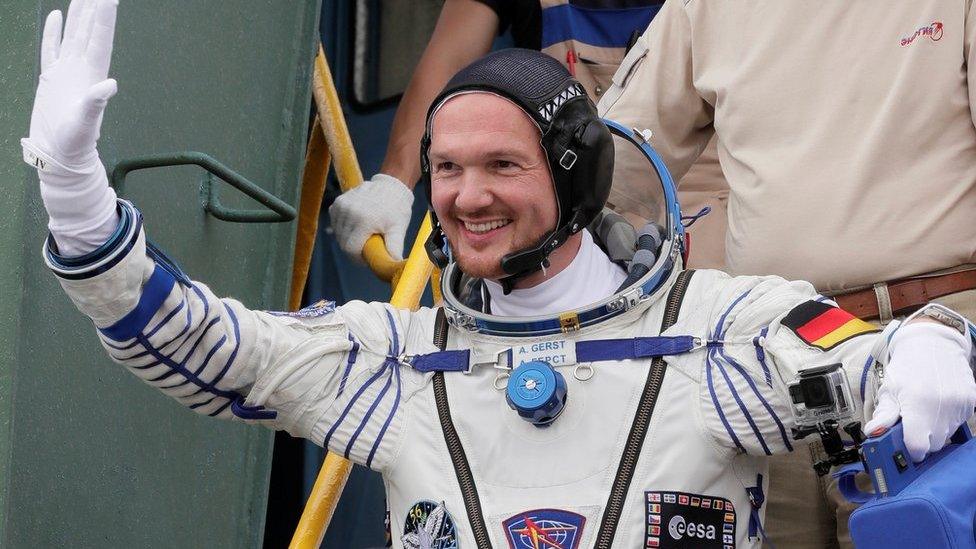Nasa to continue using Soyuz rockets despite breakdown
- Published
The booster failure became apparent about 90 seconds into the October flight
US space agency Nasa says it will continue using Russian Soyuz rockets for missions after Thursday's dramatic emergency landing following a booster failure shortly after lift-off.
Speaking in Moscow, Nasa head Jim Bridenstine said he expected a December mission to the International Space Station (ISS) to go ahead as planned.
The two crew members who aborted were ready to fly again, he said.
Russian officials are investigating what caused the booster to fail.
Russian cosmonaut Alexey Ovchinin and American astronaut Nick Hague were heading for a six-month mission on the ISS when their flight was aborted. Their capsule separated and landed 400km (250 miles) from the launch site.
Russia's Deputy Prime Minister Yuri Borisov had said no further manned missions would take place "until we believe that the entire situation guarantees safety".
What did the Nasa chief say?
Mr Bridenstine said he had full confidence in the safety and reliability of Russian-made Soyuz space rockets but the incident showed the importance of having more than one way of getting people into space.
"I fully anticipate that we will fly again on a Soyuz rocket," he said, praising the "wonderful relationship" between Nasa and the Russian space agency Roscosmos.
The Nasa chief also praised Mr Ovchinin and Mr Hague for aborting the launch.

Nick Hague (L) and Alexey Ovchinin pictured after their emergency landing
"It's amazing everyone came home safely. It could have not been good. But it was a very good day when the crews came home alive. The crew were calm when the worst was before them. Both are ready to fly again," he said.
"It was a failed mission but a successful flight. Not every mission that fails, ends up so successful," he added.
What happened during the flight?
The launch appeared to be going smoothly, but some 90 seconds into the flight Nasa reported a problem with the booster rocket between the first and second stages of separating.
Live video of the astronauts showed them shaking violently with the vibrations caused by the malfunction.
After about 114 seconds of flight, the emergency escape system sprang into action, separating the crew capsule from the rocket.
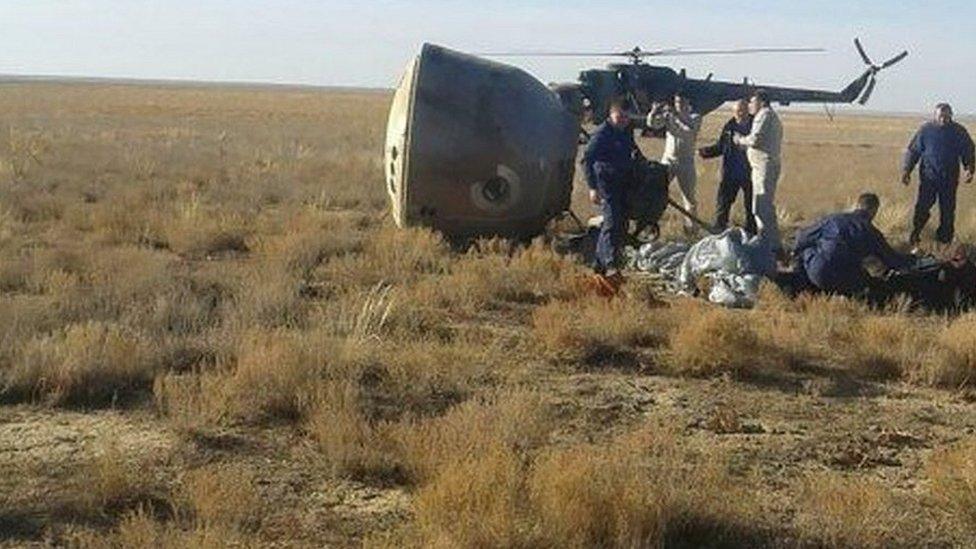
Rescuers dashed to the landing site
The capsule then began what Nasa termed a "ballistic descent", subjecting the crew to greater G-force - the force imposed on a body by rapid acceleration or deceleration - than during a normal landing.
Nasa said the capsule, which later deployed parachutes, took 34 minutes to reach the ground on the Kazakhstan steppe, hundreds of kilometres north-east of the Baikanour cosmodrome launch site.
Rescue teams using off-road vehicles and paratroopers deployed in helicopters raced to locate the capsule, near the Kazakh city of Dzhezkazgan.

Analysis: An uncomfortable ride back to Earth
By Jonathan Amos, BBC science correspondent
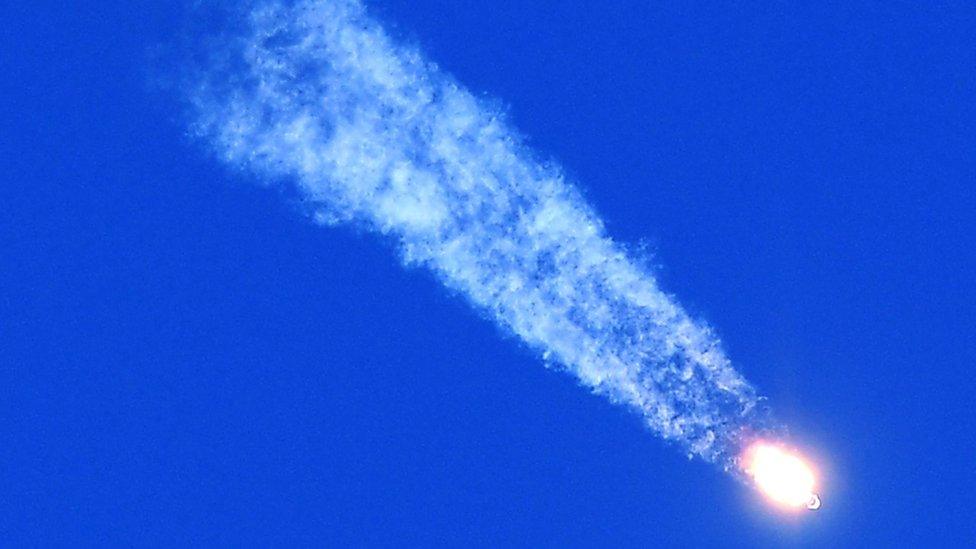
Soyuz is one of the oldest rocket designs but also one of the safest. The malfunction appeared to occur around what is termed "staging", where the ascending vehicle goes through the process of discarding its empty fuel segments.
The onboard astronauts were certainly aware that something was not right because they reported feeling weightless when they should have felt pushed back in their seats. The escape systems are tested and ready for exactly this sort of eventuality. It would have been an uncomfortable ride back to Earth, however. The crew would have experienced very sharp accelerations and decelerations on the return.
There is already much discussion about the current state of Russian industry and its ability to maintain the standards of yesteryear. Whatever the outcome of the inquiry, this event will only heighten those concerns and will underline to the US in particular the need to bring online new rocket systems. These vehicles, produced by the Boeing and SpaceX companies, are set to make their debut next year.

How does US-Russian space co-operation work?
It is an area which has survived otherwise tense relations between Russia and the US. Nasa has been paying for seats on Soyuz rockets to ferry its astronauts to the International Space Station since the Space Shuttle programme ended in 2011.
The crew already on the ISS will not be affected by Thursday's aborted mission, Russia's Tass news agency reported, quoting an unnamed source as saying they have enough supplies.
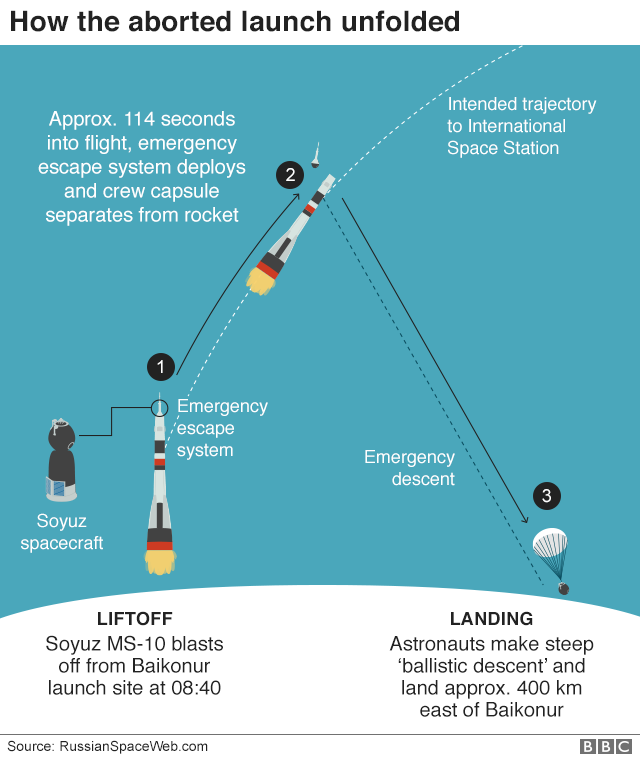

But the three - a German, a Russian and an American - might have to stay on the space station into next year because of the crash, Interfax quoted a source as saying.
Roscosmos has ordered the setting up of a state commission to investigate the incident and a criminal investigation is also expected.

You might also like to read:

Have there been similar incidents in the past?
Thursday's incident is thought to be the first launch mishap for a Russian Soyuz booster since a Soyuz mission was aborted in 1983. Then, a rocket malfunctioned shortly before launch, and the crew vehicle was ejected to safety.
In recent years, Russia's space programme has faced a number of technical failures - 13 since 2010.
Last year, contact was lost with a Soyuz rocket's Fregat upper stage, which was carrying a new weather satellite and 18 secondary satellites.
Earlier in 2017, at least nine of a payload of 73 satellites were reported "dead on arrival or severely degraded" after separation from their Soyuz-2.1 launch vehicle.
In August, a hole appeared in a Soyuz capsule already docked to the ISS which caused a brief loss of air pressure and had to be patched. In this instance, Russia said the hole may have been drilled "deliberately".

- Published5 September 2018
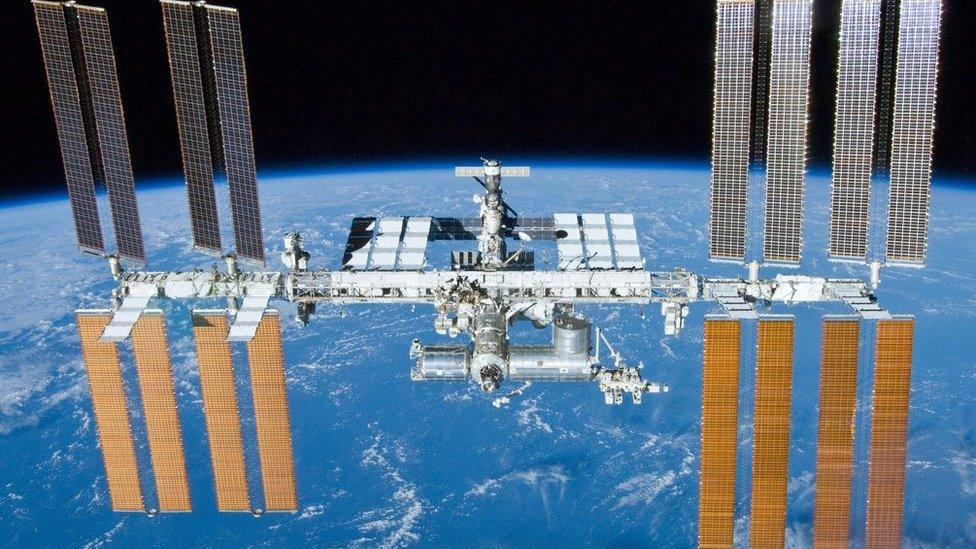
- Published3 June 2018
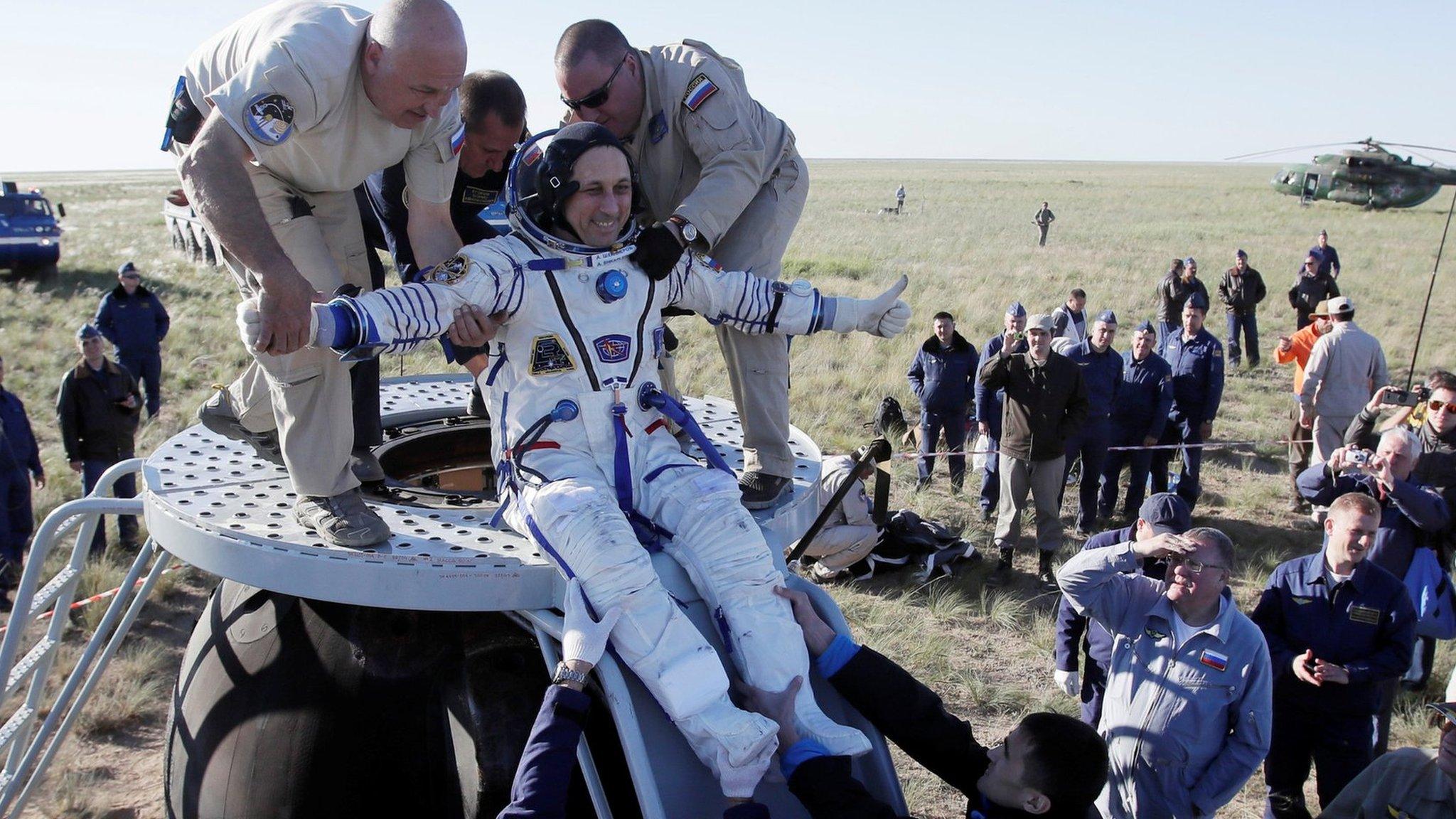
- Published6 June 2018
